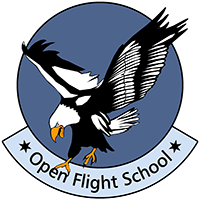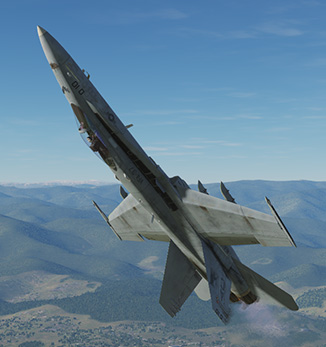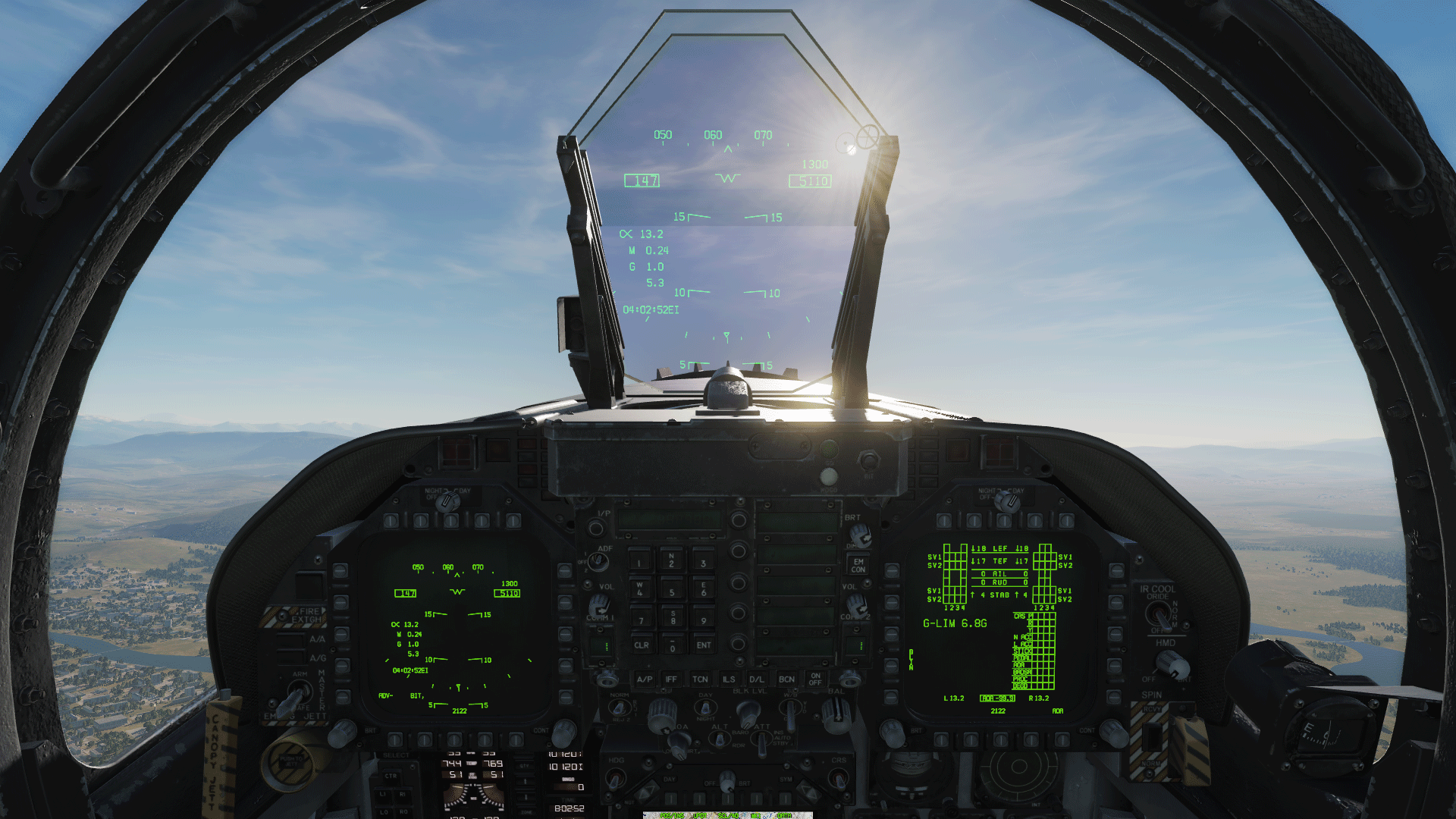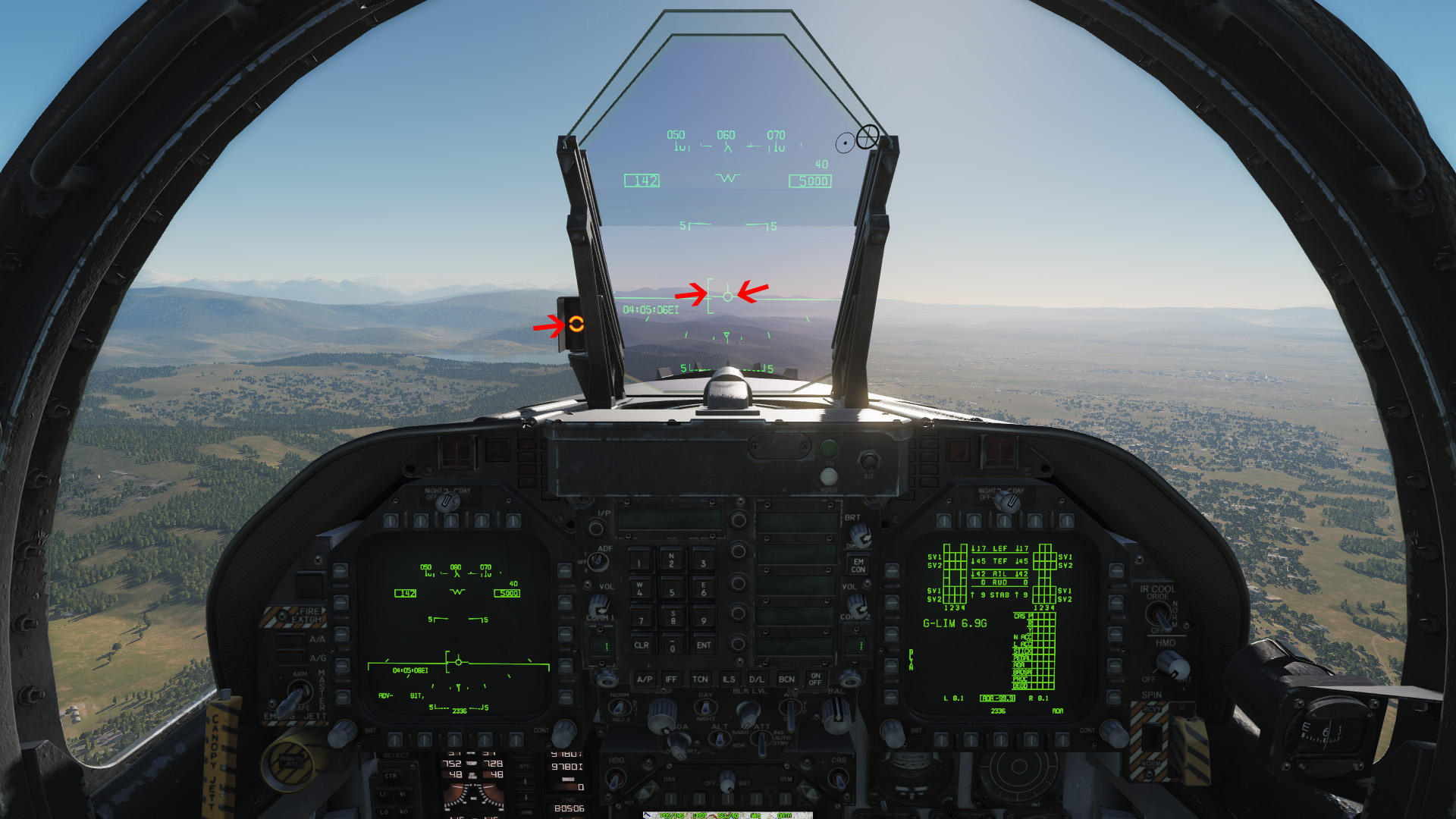Simplified Procedures in Detail
7. Flying the Plane
In order to get the flight characteristics, the mission Take-off and free flight. Take off from the runway and climb to 5000 feet.
We recommend that you first take a few flights. During this you should familiarise yourself with the machine and its flying characteristics.
You can try a few things at moderate speed and appropriate altitude. Work through the following list:
-
Climb and dive, i.e. fly up and down, sometimes gently, sometimes more aggressively, sometimes at slow speed and sometimes faster. How does the bird react?
-
Flt right, left turns, also at different speeds and roll rates.
-
Apply little to full rudder.
-
Combine rudder with aileron (slipping).
-
Test the reaction to power changes by increasing and decreasing thrust.
-
Try to fly as slowly as possible without losing control. At what speed does the audio warning signal start? At what speed will the F/A-18C sink? When does the shaking in the cockpit start? This is a sign that you are close to a stall.
All this should be tested to get an initial feeling for the plane. It's called "flying the plane".
Tip: Take the opportunity and adjust the joystick axes (curvature) a little bit if necessary to find a good handling with your hardware and this plane. This is a question of personal taste, but also a matter of practice and habituation. Note: As much curvature and central dead zone as necessary to allow small, sensitive control inputs, but as little as possible to avoid overreactions at the extreme deflection of the axles. +15 is a commonly used curvature.
As a specific preparation for the landing, it is best to test the flight characteristics again with partially and fully extended flaps and landing gear:
Now fly at a sufficient altitude of about 5,000 feet or even a little more or less again as slow as possible. At what speed can you no longer control the plane? So when does the stall start? The joystick feels doughy and the plane hardly reacts or delays your rudder movements. Remember these speeds to be prepared for them later. By lowering your nose and accelerating, you can usually end the stall quickly as long as you don't wait too long
You may have already started to spin or even hit the ground. Try to approach these manoeuvres progressively and so minimise destroying material and life unnecessarily.
Try this to prepare for landing:
- Lower the landing gear and flaps, align flight path indicator with the zero line and reduce speed.
- Try to maintain about 140 knots and Trim back so that the flight path indicator is in the middle of the E bracket and the orange circle of the AOA Indexer, to the left of the HUD, is glowing. If this works, you can already hold the correct angle of attack for landing.
Get used to flying slowly, it will make the landing much easier.
The Training Mission Package includes the mission to practice landing and free flying. This is the quickest way to test your flight behaviour over and over again or to directly approach the landing.



